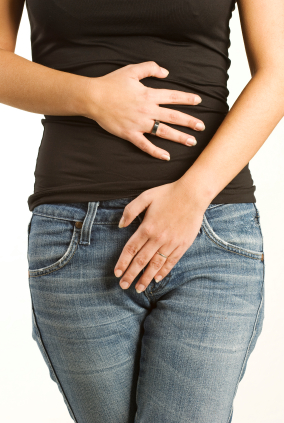In this article Mr Christian Barnick discusses the symptoms of an overactive bladder and stress urinary incontinence in women and explains the latest options for treating these conditons
Contents
- Introduction to bladder problems in women
- Overactive bladder and stress urinary incontinence
- What are the symptoms of an overactive bladder?
- Diagnosing an overactive bladder
- Treatment options for an overactive bladder and stress incontinence
- Surgical options for treating stress incontinence
- What is urethral bulking?
- What are suspension procedures for treating stress urinary incontinence?
- Clinical evidence to support the use of the TVT-O procedure in treating stress urinary incontinence
- Conclusion
Introduction to bladder problems in women
Bladder problems are very common. Around one in three women suffer from urinary incontinence (leakage of urine) at some stage in their life. Bladder problems can be extremely embarrassing and have a major impact on a woman’s life. Women are therefore often understandably reluctant to discuss these problems with a doctor and as a result many women will suffer for years before seeking medical advice.
Bladder problems do not always occur in isolation but may be associated with bowel problems, prolapse and sexual dysfunction.
Overactive bladder and stress urinary incontinence
The two most common bladder problems that affect women are an overactive bladder (OAB) and stress urinary incontinence (SUI) and these two problems are quite often combined.
What are the symptoms of an overactive bladder?
The main symptoms of an overactive bladder are:
- Leaking urine when laughing, coughing or sneezing (SUI or giggle incontinence).
- Lack of bladder control leading to the need to rush to the toilet (or the need to know exactly where the toilets are at any given moment).
- Leaking urine before getting to the toilet associated with urgency (OAB).
- The urge to pass urine too often.
- The urge to pass urine frequently in the night.
- Difficulty emptying the bladder.
- Frequent urine infections.
- Pain on passing urine.
Diagnosing an overactive bladder
Bladder problems are understandably upsetting and women should receive a sensitive and a sympathetic approach from their doctor. The treatment of bladder problems should start with an indepth consultation and a gentle examination. I ask my patients to complete a ‘bladder diary’ and in addition a urine sample is taken for testing. It may also be necessary to perform a urodynamics test (a test to assess how the bladder is functioning) or possibly a cystoscopy (a camera to check the inside of the bladder) to determine the exact nature of the problem.
Treatment options for an overactive bladder and stress urinary incontinence
Depending on the diagnosis, bladder problems can often improve with simple lifestyle changes and targeted pelvic-floor exercises. Lifestyle changes are particularly useful for women with overactive bladder symptoms. Interventions such as reducing fluid intake, bladder training and cognitive behavioral therapy can dramatically reduce the symptom impact on quality of life.
Women looking at how to stop stress urinary incontinence will also benefit from specialist pelvic floor exercises, which are particularly effective when supervised by a dedicated physiotherapist.
Medication can also be very effective in reducing the symptom impact of an overactive bladder. The treatment involves the use of drugs which block the parasympathetic nerve supply to the bladder (these drugs are called anticholinergics) thus increasing the length of time women have to get to the toilet and also reducing frequency, urgency and the need to get up during the night to go to the toilet (nocturia). Unfortunately, all of these drugs lead to unwanted side effects including dry mouth, blurring of vision, constipation and drowsiness, although these are drug and dose dependent. The current market leader has been shown to be significantly better than placebo and has the benefit of dose titration and minimal side effects.
Medication is not so effective in treating stress urinary incontinence, however, and women who do not obtain symptom relief with pelvic floor exercises should therefore consider surgical options.
Surgical options for treating for stress urinary incontinence
Surgical treatment is mainly used for stress incontinence although in some circumstances it may also benefit overactive bladder symptoms. There are two main surgical treatment options for stress incontinence. These are urethral bulking and suspension procedures.
What is urethral bulking?
Urethral bulking involves injecting fillers around the mid-urethra, which is the tube that carries urine from the bladder to the genitals. This encourages the closure of the urethra and reduces leakage of urine. It has become an important alternative for treating patients requesting minimally invasive procedures and it is particularly well suited for:
- Young women of childbearing age.
- Elderly women who are not suitable for surgery.
- Women with residual incontinence after suspension procedures.
- Women with mixed urinary incontinence (SUI and Urge).
- Patients who do not want conventional surgery.
These techniques are minimally invasive and may be performed under local anaesthetic. They are not as successful as surgery involving the bladder neck or urethral support and the injections may have to be repeated.
What are suspension procedures for treating stress urinary incontinence?

For many years the Colposuspension procedure was the “Gold Standard” for continence surgery, which entails surgery to lift the neck of the bladder. This is usually carried out as an open operation but in the correct hands can be performed using keyhole surgical techniques.
In the late 1990’s the use of tension free vaginal tapes (TVT) became popular in the treatment of stress incontinence as these were shown to have similar results to the Colposuspension but with less short and long term side effects. As a result we now have many modifications on the original TVT technique and robust long-term clinical outcome data.
The GYNECARE TVT™ Obturator (TVT-O) approach was launched in 2004 and this offers an alternative approach for the surgical treatment of stress urinary incontinence. Since the launch over 190,000 women have benefited from this procedure. The TVT-O can be performed as a day case procedure under general, local or spinal anaesthetic. The procedure carries all the benefits of the original TVT but with the additional benefit of not entering into the retro-pubic area thereby minimising potential damage to the bladder or urethra.
The TVT-O system is a sterile, single-patient-use procedure kit. The device consists of one piece of blue polypropylene mesh tape covered by a plastic sheath overlapping in the middle.
A small incision is made in the front of the vagina and the tape is then inserted and the tension carefully adjusted. The result is that the tape sits loosely under the urethra and helps to support it during stress, thus preventing urinary leakage.
The operation takes about 20 minutes. Some post-surgery procedure pain relief may be necessary, this is usually only necessary for the first day or two following the surgery. The patient usually passes urine within a few hours and can return home either the same day or the following day. Most studies have shown the vast majority of women completely back to their normal activities and work within 2 weeks of the surgery.
Clinical evidence to support the use of the TVT-O procedure in treating stress urinary incontinence
This is a clinically proven system that has shown excellent cure rates for women suffering from stress urinary incontinence. The cure rates will depend on the individual woman and the pre-existing symptoms.
Data that has been compiled from three-year follow up checks has found that no erosion or persistent pain was noted by patients who underwent the TVT-O procedure.
Trans-Obturator tapes were also appraised as part of the NICE (National Institute for Health and Clinical Excellence) Clinical Guidance 40 on the Management of Urinary Continence in Women. The guidance concluded that "Synthetic slings using a retro-pubic 'top down' or a trans-obturator foramen approach are recommended as an alternative treatment options for stress urinary incontinence if conservative management has failed, provided that women are made aware of the lack of long term outcome data".
Conclusion
Bladder problems are very common in women of all ages and can severely compromise quality of life. Many women will not seek treatment as they feel that it will not be effective or may involve major surgery. However, it is important that women realise that this is not actually the case. For most women the treatment will be conservative and those who still have problems may well benefit from relatively simple surgery.
It is crucial that treatment is individualised, that realistic outcome goals are set and that all treatment is performed with fully informed consent. If you still have questions then complete our contact form and we will do all we can to help. Further information can also be obtained from the bladder and bowel foundation.


